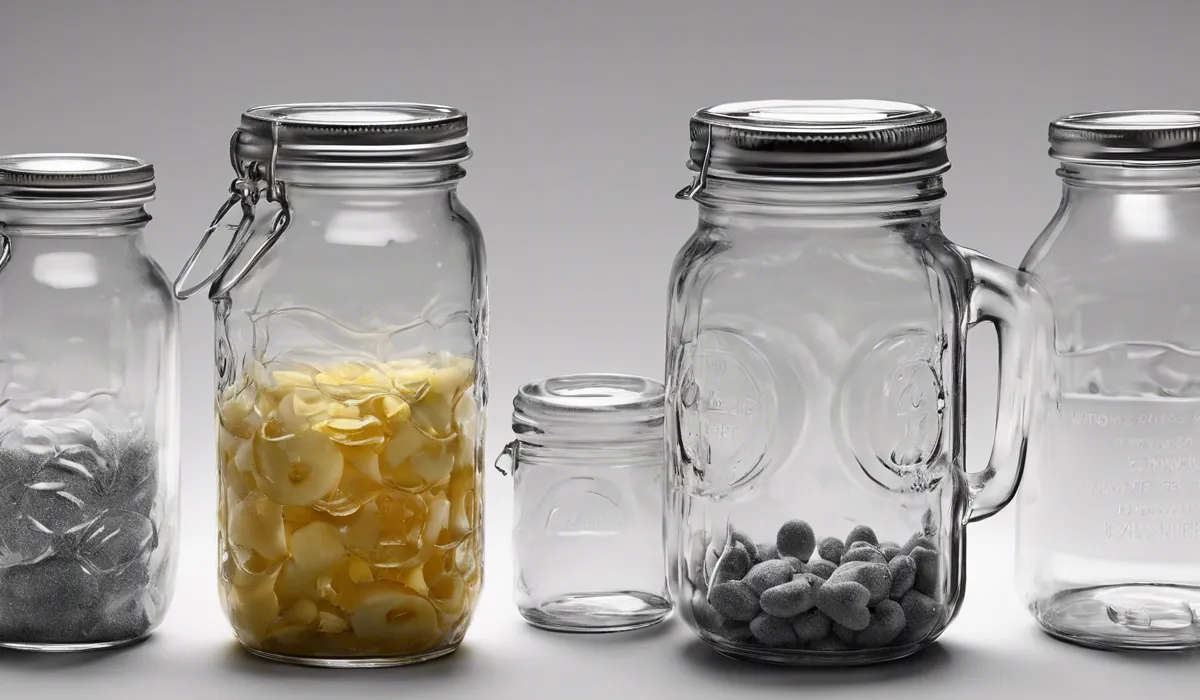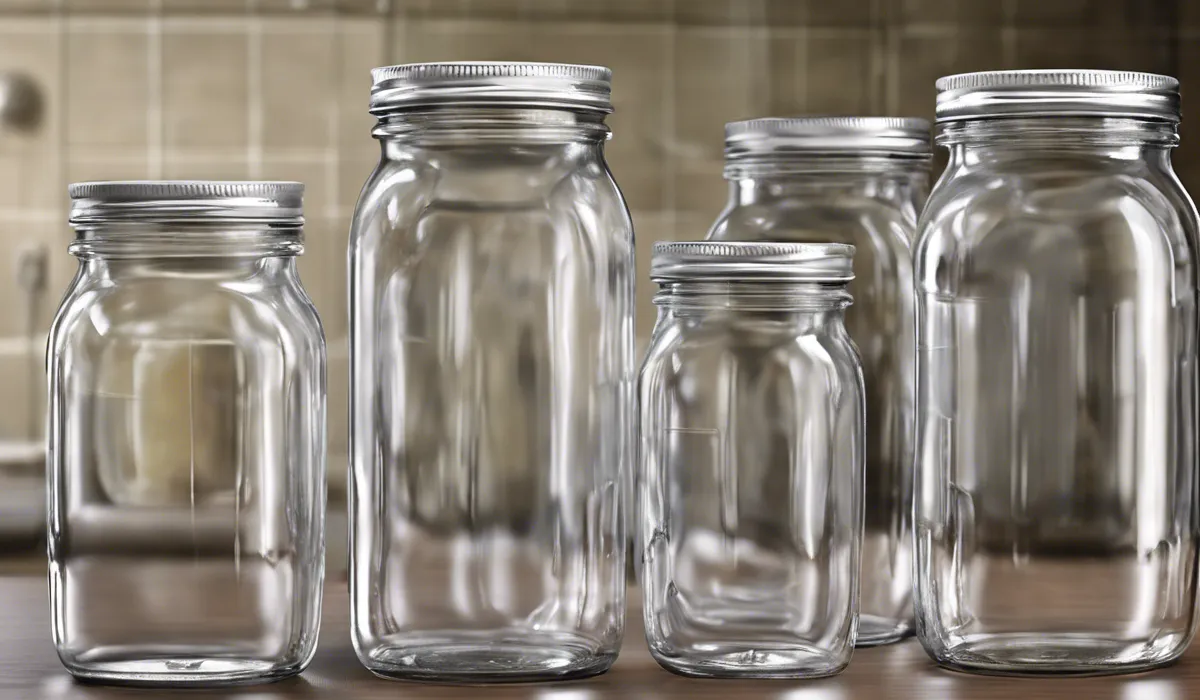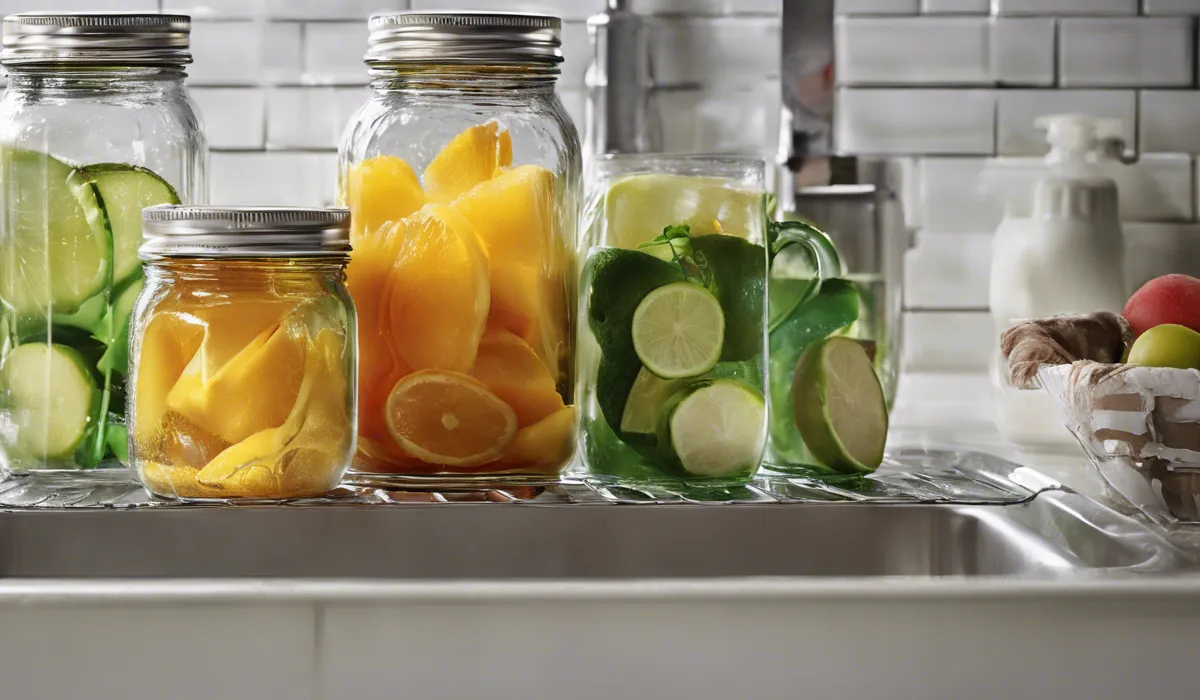Can Glass Jars Go in the Dishwasher? Myths Busted!
Most glass jars can go in the dishwasher, placed on the top rack to prevent breakage. Ensure they’re dishwasher-safe and remove labels before washing. Avoid high-heat settings for delicate jars. Check manufacturer instructions for specifics.
Understanding Dishwasher Safety for Glass Jars

Different Types of Glass Material
When it comes to dishwashing glass jars, it’s essential to recognize that not all glass is created equal. There are several types of glass materials, each with its own set of properties and dishwasher compatibility.
The most common types include soda-lime glass, borosilicate glass, and tempered glass. Soda-lime glass is the most prevalent and is generally dishwasher safe, but it’s more susceptible to thermal shock.
Borosilicate glass, often used in lab equipment and kitchenware, can better withstand temperature changes.
Tempered glass is strengthened through thermal processes, making it tougher and more resistant to breakage than regular glass. Understanding these differences is crucial for ensuring the longevity of your glass jars during dishwashing.
Risks Associated with Dishwashing Glass
Dishwashing glass jars isn’t without its risks. Common issues include thermal shock, which can occur when glass experiences sudden temperature changes, leading to cracking or shattering.
Additionally, improper loading can result in collisions between items, causing chips or breaks.
Hard water can also leave mineral deposits on glass surfaces. To mitigate these risks, it’s important to follow best practices for dishwashing glass jars, which we’ll explore in further detail.
Manufacturer’s Instructions and Labels
Before placing glass jars in the dishwasher, always consult the manufacturer’s instructions. These guidelines provide critical information on whether the product is dishwasher safe and any specific requirements or warnings.
Adhering to these instructions helps preserve the integrity of the glass and prevent damage during the dishwashing process. Labels on the jars themselves often indicate the suitability for dishwasher use, so keep an eye out for these markers.
The Importance of Checking for Dishwasher-Safe Marks
Many glass jars come with symbols or text indicating whether they are dishwasher safe. Look for a dishwashing symbol, which typically resembles dishes being sprayed with water, or explicit text stating “Dishwasher Safe.”
These marks are a quick reference to ensure you’re not exposing your glass jars to potential harm in your dishwasher. It is always better to err on the side of caution if you are unsure about the jar’s compatibility with dishwashing.
Preparing Glass Jars for the Dishwasher

Removing Labels and Residue
Before placing glass jars in the dishwasher, it’s essential to remove any labels and adhesive residue. Labels can come off during the wash cycle and clog the dishwasher’s filter system or stick to other items.
Use warm, soapy water to soak the jars and facilitate label removal. For stubborn adhesive, a mixture of baking soda and cooking oil can help loosen the residue. Ensure all adhesive is completely removed to prevent any issues during the wash cycle.
Rinsing Before Loading
To ensure a thorough clean, it’s a good practice to rinse glass jars before placing them in the dishwasher.
This step helps remove any remaining food particles or liquids that could spread to other dishes during the wash cycle. Rinsing also helps the dishwasher detergent work more effectively, leading to cleaner results.
Proper Placement in the Dishwasher
The placement of glass jars in the dishwasher can greatly affect their safety and cleanliness. Most glass jars should be placed on the top rack to avoid the intense heat from the heating element at the bottom of most dishwashers.
Ensure that jars are spaced apart to avoid collisions and potential breakage. Position them upside down so water can run off easily and prevent pooling.
Ensuring Jars are Empty and Not Sealed
Before dishwashing, verify that all jars are completely empty and not sealed. A sealed jar can create pressure during the heat cycles, which might lead to cracking or exploding.
Open lids allow for proper cleaning inside the jar and prevent pressure buildup. It’s also a good moment to check for any existing cracks or chips that could worsen during the wash cycle.
Best Practices for Dishwashing Glass Jars

Avoiding Extreme Temperature Changes
To prevent thermal shock, it’s crucial to avoid exposing glass jars to extreme temperature changes. Don’t place hot jars directly into a cold dishwasher; let them cool first.
Similarly, allow the jars to reach room temperature before removing them from a hot dishwasher. Gradual temperature changes help maintain the integrity of the glass and extend its lifespan.
Selecting the Right Dishwasher Cycle and Detergent
Choosing the appropriate dishwasher cycle and detergent is vital for the care of glass jars. Use a gentle cycle with a lower temperature setting for delicate jars.
Glass-friendly detergents that are less abrasive can help prevent etching and maintain the clarity of the glass. It’s also beneficial to use a rinse aid to reduce water spots and streaks, leaving your glass jars sparkling clean.
Loading Tips to Prevent Breakage and Ensure Cleanliness
Load glass jars carefully to prevent them from knocking against other items during the wash cycle. Space them out and avoid overcrowding the dishwasher.
Place heavier items on the bottom rack and lighter, more delicate items on the top. Ensure that spinning arms can move freely without obstruction to guarantee a thorough clean and avoid damaging your jars.
Post-Dishwashing Checks for Damage or Residue
After the dishwasher cycle is complete, inspect your glass jars for any signs of damage, such as cracks, chips, or breakage.
Check for any remaining residue or water spots and wipe them clean if necessary. If you find damage, it’s best to recycle the jar rather than risk using it and potentially causing injury or contamination.
FAQs About Dishwashing Glass Jars
Can all glass jars be washed in the dishwasher?
Most glass jars can be washed in the dishwasher, but it is crucial to check if they are labeled as dishwasher-safe.
Where should glass jars be placed in the dishwasher?
Glass jars should be placed on the top rack of the dishwasher to prevent breakage.
Do I need to remove labels from glass jars before placing them in the dishwasher?
Yes, you should remove labels from glass jars before washing them in the dishwasher to avoid clogging the drain.
Can delicate glass jars be washed in the dishwasher?
Delicate glass jars can be washed in the dishwasher, but avoid using high-heat settings and check the manufacturer’s instructions.
Should I consult the manufacturer’s instructions before dishwashing glass jars?
Yes, always consult the manufacturer’s instructions for specifics on whether a glass jar is dishwasher-safe and how to properly wash it.
Final Thoughts
Most glass jars are suitable for dishwashers if placed on the top rack to minimize the risk of breakage. It’s important to confirm they are dishwasher-safe and to strip off any labels beforehand.
Delicate jars should not be exposed to high-heat settings. Always consult the manufacturer’s instructions for specific care and handling recommendations.





